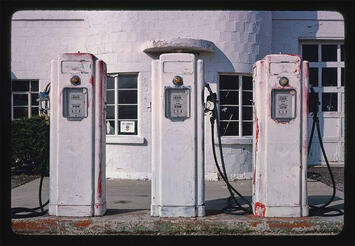
Last week, I took my 2012 Acura to my longtime auto repair shop, Rising Sun Automotive, for an oil change. Since we were going on a road trip, I asked the shop manager to check the car out and ensure everything was up to snuff.
A few hours later, they told me the car was due for a brake system flush and needed some suspension work. Thus, what I thought would be a $100 oil change turned into a $1,000 repair bill. But I was glad to pay it. Why? Even though the Acura has about 115,000 miles on the odometer, I like the car. It’s reliable, paid for, runs great, the tires are relatively new, and I am diligent about maintenance.
Furthermore, I have no desire to buy something else. I frequently rent new cars while traveling for speaking engagements, and I have yet to drive a vehicle (of any make) that made me want to buy one. Automakers are spending way too much money on buttons and complicated gadgets and far too little on basic functionality. Plus, new cars cost too much, and as my friends at Rising Sun keep telling me, replacement parts on newer cars are insanely expensive.
My attitude toward maintaining my aging automobile and my grumpiness about new cars aligns with tens of millions of other US motorists. Earlier this year, S&P Global Mobility found that the average age of cars and trucks in the US rose “to a new record of 12.6 years in 2024, up by two months over 2023.” In other words, the vintage of my 2012 Acura TSX is on par with the rest of the US fleet. Here’s the key paragraph from another S&P Global report on the same topic:
New vehicle prices remain prohibitively high for many consumers in the US, with average transaction price reported at US $47,218 in March 2024, according to S&P Global Mobility. Additionally, inflation is proving more persistent than expected and there is trepidation around the shift to electric vehicles. A combination of these factors has resulted in consumers keeping their vehicles on the road longer, driving average age upward. (Emphasis added)
There are now 286 million vehicles in operation in the US, and the average passenger car is 14 years old. The combined age of the fleet, which mixes cars and light trucks, is 12.6 years. S&P Global Mobility expects the auto fleet to continue aging through 2028, when some 40% of all the vehicles in the country will be between 6 and 14 years old.
Read the rest of this piece at Robert Bryce Substack.
Robert Bryce is a Texas-based author, journalist, film producer, and podcaster. His articles have appeared in a myriad of publications including the Wall Street Journal, New York Times, Forbes, Time, Austin Chronicle, and Sydney Morning Herald.
Photo: John Margolies; Olympic gas pumps, San Diego, California, viaPicryl/Library of Congress.












